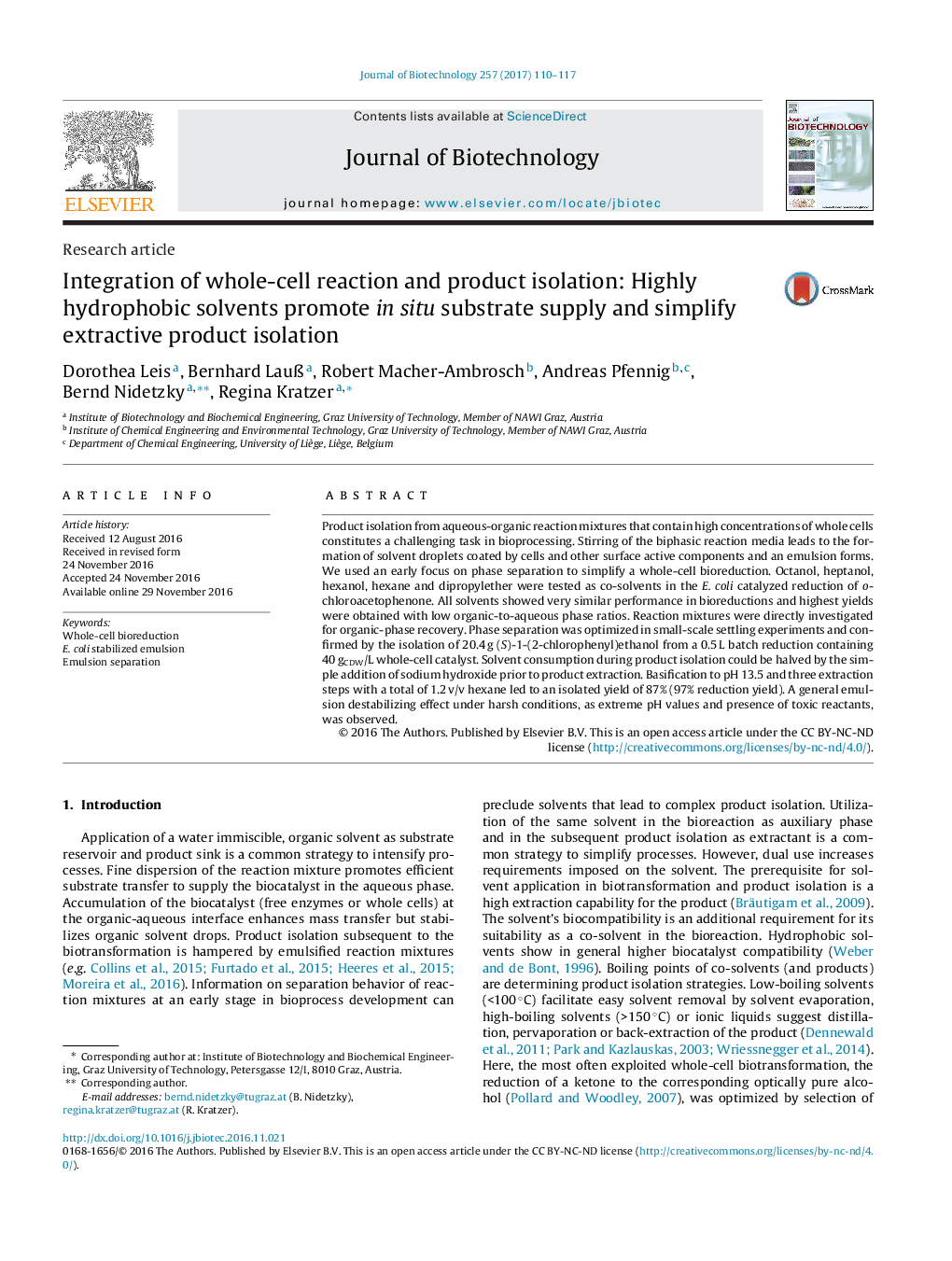| کد مقاله | کد نشریه | سال انتشار | مقاله انگلیسی | نسخه تمام متن |
|---|---|---|---|---|
| 6451899 | 1416986 | 2017 | 8 صفحه PDF | دانلود رایگان |
- Bioreduction mixtures containing whole cells and hydrophobic co-solvents emulsify upon mixing.
- Hexane leads to less stable emulsions compared to co-solvents that have the ability to form hydrogen bonds (here hexanol, heptanol, dipropylether).
- Harsh conditions such as extreme pH values and presence of toxic reactants destabilize the emulsions.
- Solvent consumption during product extraction is halved by simple basification of the reaction mixture to pH 13.5.
Product isolation from aqueous-organic reaction mixtures that contain high concentrations of whole cells constitutes a challenging task in bioprocessing. Stirring of the biphasic reaction media leads to the formation of solvent droplets coated by cells and other surface active components and an emulsion forms. We used an early focus on phase separation to simplify a whole-cell bioreduction. Octanol, heptanol, hexanol, hexane and dipropylether were tested as co-solvents in the E. coli catalyzed reduction of o-chloroacetophenone. All solvents showed very similar performance in bioreductions and highest yields were obtained with low organic-to-aqueous phase ratios. Reaction mixtures were directly investigated for organic-phase recovery. Phase separation was optimized in small-scale settling experiments and confirmed by the isolation of 20.4Â g (S)-1-(2-chlorophenyl)ethanol from a 0.5Â L batch reduction containing 40Â gCDW/L whole-cell catalyst. Solvent consumption during product isolation could be halved by the simple addition of sodium hydroxide prior to product extraction. Basification to pH 13.5 and three extraction steps with a total of 1.2Â v/v hexane led to an isolated yield of 87% (97% reduction yield). A general emulsion destabilizing effect under harsh conditions, as extreme pH values and presence of toxic reactants, was observed.
201
Journal: Journal of Biotechnology - Volume 257, 10 September 2017, Pages 110-117
